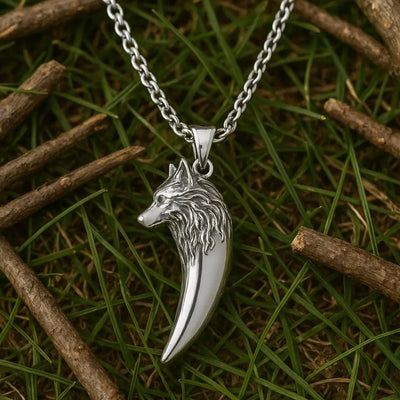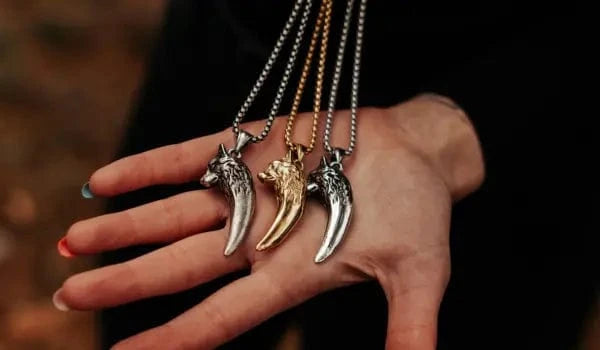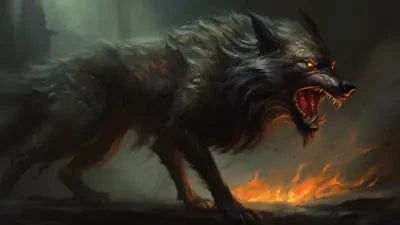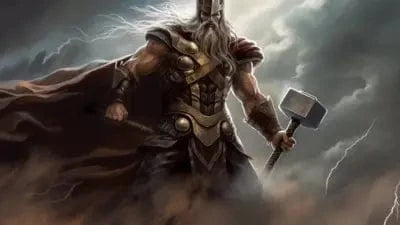Today we're going to talk about a subject that not many people in the universe of the Vikings touch on.
For the vast majority of people, art is not the first thing that comes to mind when mentioning the Scandinavians. And how can you blame them? For many decades, shipbuilding, navigation and warfare were the number one media topics when it came to the Viking Age. But just because some medieval Scandinavians were famous sailors doesn't mean we should turn our attention away from Viking men who preferred to stay at home creating works of art.

DID THE VIKINGS MAKE ART?
A common misconception about the medieval Norse people is that they had little time to express their artistic abilities because they were often at war. This stigma also stems from the stereotypical idea that only delicate and gentle people can consider themselves artists. And as you know, the Viking men were famous for anything but these characteristics. Today, we are delighted to put an end to these theories once and for all, as they have nothing to do with the truth. Not only did the Norse people create art in Viking times, they were exceptional at it.

34,90€
50,00€
What kind of art did the Vikings make?
Unlike today, most people did not believe in the phrase "art for art's sake" in Viking times. This is evidenced by the fact that there are hardly any examples of Viking objects that had no other purpose than to be aesthetic. For the most part, Viking art was practical. And Viking-era artists preferred to leave their mark by decorating objects already in use.
HOW DID THE VIKINGS AFFECT THE ART WORLD?
Many prominent artists have decided to pay homage to Viking art in various novels, poems, songs, comics, films and television shows. The German composer Richard Wagner was one of them. His seminal work The Ring of the Nibelung was based almost entirely on stories from Nordic mythology. At the time, Wagner had no idea that his cycle of musical dramas would gain widespread public recognition and inspire a man named John Ronald Reuel Tolkien to write "The Lord of the Rings," one of the best-selling books ever written.
Other than classical music, Viking art has inspired many heavy metal musicians, who have even created a genre of their own, "Viking metal". Heavily influenced by the art and Nordic mythology, the Viking metal style reached its peak in the early to mid-1990s, but continues to inspire musical artists today.
Viking art has also heavily influenced the world of television. The legends of the prose and poetic Edda served as inspiration for Marvel Comics, which in 2006 published the comic book about a fictional villain named Ragnarök who used his supernatural abilities against the protagonist heroes of the Marvel universe. In 2017, Marvel Studios produced a film based on this comic book and named it Thor: Ragnarök.
WHAT ARE THE SIX STYLES OF VIKING ART?
As time went on, Viking art became more and more elaborate.
When archaeologists spotted the differences based on the historical period in which the Scandinavians created certain artefacts, they decided to classify the history of Norse art into six styles.
The point is that just because a particular art style was more prevalent in a given period does not mean that it immediately replaced the previously favoured style. The most likely theory is that a new style began as a slight change that gradually evolved into a new Viking art form.
The styles were named after the geographical sites where they were discovered, and we know them today as Oseberg, Borre, Jelling, Mammen, Ringerike and Urnes.
The Oseberg Style
The style of Viking art that emerged in the early 9th century and was used throughout Scandinavia for at least eight decades is called Oseberg.
The basic motifs developed by Viking artists during the period of the Oseberg style were designed in the manner of a carpet, and they set a precedent for the next five Viking art styles. The gripping beast motif was probably the defining feature of the Oseberg style, and its variations were found on most ninth-century objects used for religious purposes. Like the other five, this style is named after the archaeological site where the best-preserved object was found, in this case the Oseberg mound. As its name suggests, the Oseberg vessel was more of a tomb than a ship meant to sail the seas, and inside, archaeologists found the skeletons of two women surrounded by a significant amount of burial material.

The Viking artists made sure to decorate the ship with carved wooden statues with animal heads, adding grip beast motifs, the most striking feature of the Oseberg style. In his books on Viking history, English archaeology professor Graham Campbell argues that the clawed beast motif had profound significance for Norse peoples in medieval times, as it managed to remain relevant for over 150 years.
BORRE STYLE
The Borre style is the second stage in the history of Viking art, and it got its name from bridle mounts that archaeologists found in a navigator's burial ground in Borre, Norway. The important thing to remember about the Borre style is that it never completely replaced Oseberg; it merely enriched motifs already existing in Viking art. The intertwined geometric forms and the ribbon animal motifs were the two most fundamental characteristics of Borre and could be considered innovations in relation to Oseberg.
In Borre, it was all about filling in the blanks. For example, if you saw a simple animal-headed pole placed on a Viking ship, you could tell that its creator had probably lived during the Oseberg period. Yet if the animal motifs on this object were heavily decorated with chain circles or spiral hips around the central piece, you could tell that these wooden carvings were the work of the hands of a Borre artist.
As they travelled, Borre artists spread the Nordic influence throughout the British Isles and the Baltic region. In addition, they managed to perfect the already exquisite Viking woodcarving techniques.
The JELLING STYLE
The Jelling Style first appeared in Northern Europe in the early years of the tenth century, and remained the predominant art style for over seven decades. During the Jelling, Viking art began to develop more towards stone carving, and previously favoured materials such as wood quickly fell into disuse. In the second half of the 10th century, the use of stone carving became essential for almost all religious rituals in medieval Norway. By the end of the 10th century, it was time for Jelling to say goodbye to the Viking world. The artists of the 11th century began to adopt an entirely new style of art, the Mammen.
The MAMMEN STYLE
Archaeologists discovered the first examples of the Mammen style near the village of Mammen in Jutland, Denmark, inside a burial mound of King Harald Bluetooth. Among many highly decorated stone objects, archaeologists found a piece of art worthy of any national museum - the Mammen axe. While one side of the axe head was decorated with motifs of various rounded animals with asymmetrical scrolls and ornamental contours, the other side depicted a large ribbon-shaped bird, with its entire body, wings, crest and eyes in a circle.
Despite the delicacy of its designs and its unique place in art history, in the 10th century the Mammen was suppressed by the Ringerike.
RINGERIKE STYLE
The Ringerike style is named after the Ringerike district of Oslo, Norway, where the famous Vang stone was discovered. While one side of the stone was decorated with commonly used animals such as lions, birds and snakes, the other was illuminated with runic inscriptions. In the early 11th century, art historians discovered significant differences between Viking styles in the representation of animals. Ringerike artists preferred their carved animals extremely thin and long, with almond-shaped eyes. In contrast, artists who chose some of the earlier styles preferred their animal figures to be thick and round.
Some historians like to say that the Mammen was just a transitional period between two styles. It slightly transformed Jelling's animal motifs, preparing them to reach their final form in Ringerike during the first half of the 11th century. In contrast to the striking beast of Oseberg, the animals of the Ringerike style were presented in a very peaceful manner.
We leave you with this video that talks about this style of Viking art.
STYLE URNS
The last of the six styles of Viking art is called Urnes and reached its peak in the late 11th and early 12th centuries, when most Vikings were in the process of Christianization. Although it was a long and slow process, Christianity not only strongly influenced religious practices throughout Scandinavia, but also had a considerable impact on the artistic styles then in vogue. The style of art born of Viking Christianity, called Urns, is often characterised by fine animal images wrapped in narrow patterns. The artistic emphasis is now on Christian elements, and Nordic art is there to reinforce this. As time passes and the Vikings become more inclined to the Christian faith, the stories of Norse mythology begin to fall into oblivion. The animals carved on rune stones and moated churches, presented in circular or open compositions, became thinner and thinner, until one day they were transformed into ornaments made of lines.
The Urnes style is named after the 12th-century moat in the village of Urnes, Norway. The Urnes stave factory is decorated with Nordic and Christian ornaments and is therefore a valuable UNESCO-protected museum.
Now you know everything about Viking art! We'll let you discover our other blog posts, how the one about Viking beer to learn more about the Viking universe.




